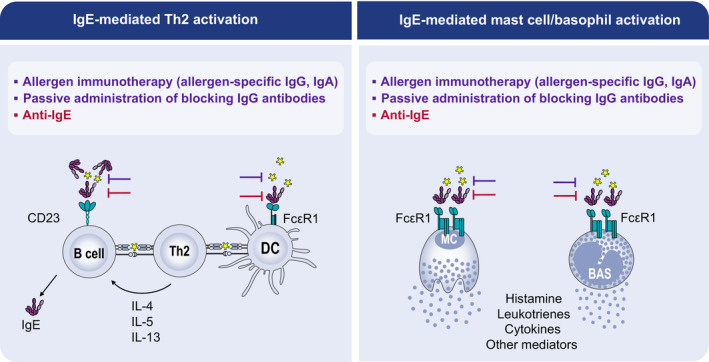FIGURE 2.

IgE‐mediated Th2 and Mast cell/basophil activation and inhibitory effects of allergen‐specific IgG and IgA as well as anti‐IgE. Inhibition of IgE‐mediated Th2‐cell activation (left panel) and basophil/mast cell degranulation (right panel) by allergen‐specific IgG and ‐IgA (purple), and anti‐IgE (red) treatment. Whereas allergen‐specific IgG and IgA compete with IgE for binding to allergens, anti‐IgE antibodies bind to IgE and block binding of IgE to both the high‐affinity (FcεRI) and low‐affinity (CD23) receptors for IgE expressed on antigen‐presenting cells and basophils/mast cells. In this way, they can inhibit IgE‐mediated activation of allergen‐specific T cells as well as the release of inflammatory mediators by basophils/mast cells induced by IgE‐mediated cross‐linking of FcεRI after allergen exposure
